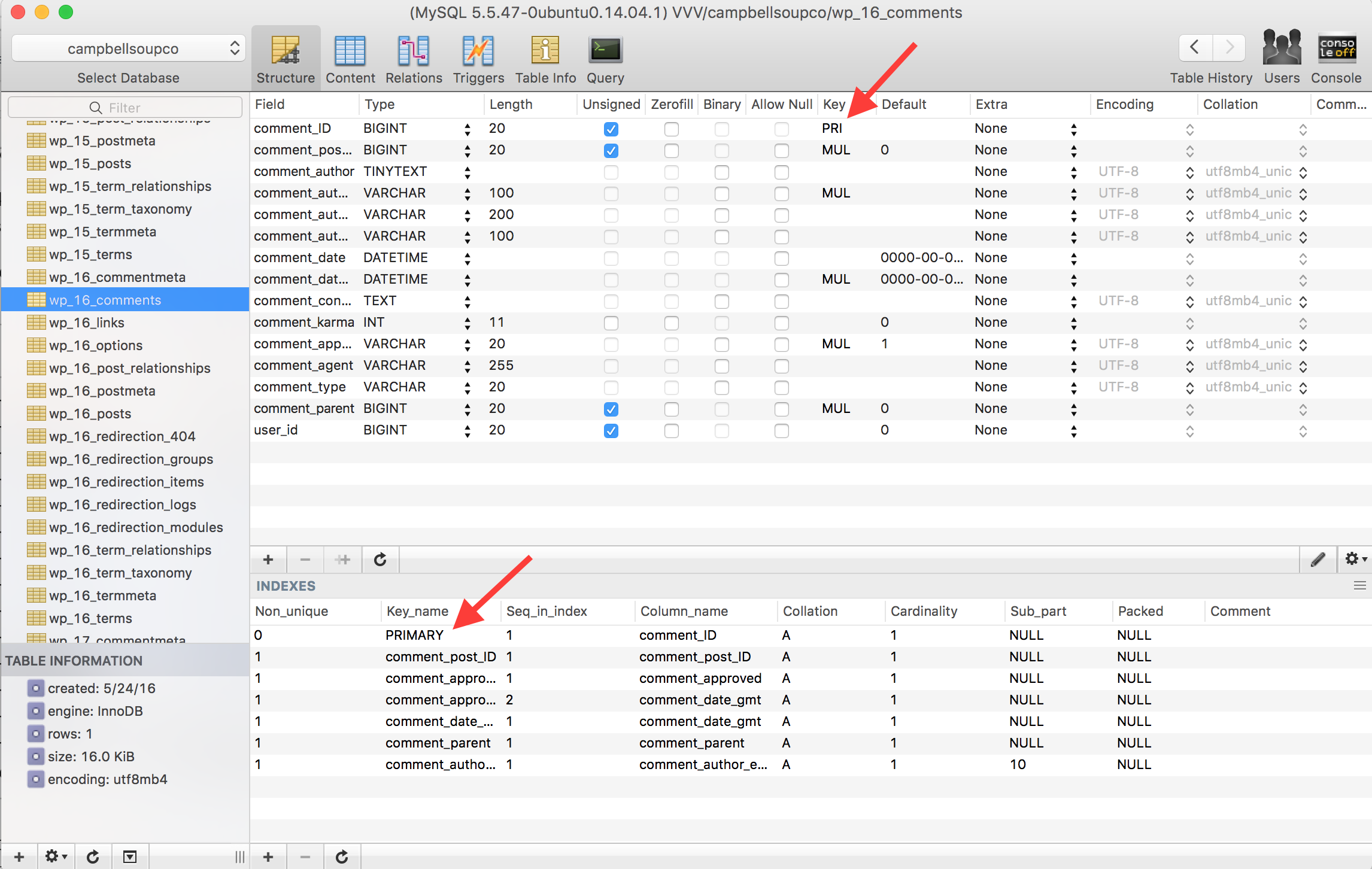May 24, 2016
WP-CLI search-replace Tables Skipped
WP-CLI‘s search-replace command is invaluable for changing all the URLs from a production or staging site to reflect your local development environment, among other things. Today I encountered something I hadn’t before; when running a search-replace on a database that I had already imported for local development, WP-CLI updated some of the database tables, but others were skipped, according to its output:
$ wp search-replace --url=example.com example.com example.dev 'wp_*_options'
+---------------+--------------+--------------+------+
| Table | Column | Replacements | Type |
+---------------+--------------+--------------+------+
| wp_15_options | option_name | 0 | SQL |
| wp_15_options | option_value | 5 | PHP |
| wp_15_options | autoload | 0 | SQL |
| wp_16_options | option_name | 0 | SQL |
| wp_16_options | option_value | 4 | PHP |
| wp_16_options | autoload | 0 | SQL |
| wp_17_options | | skipped | |
| wp_18_options | | skipped | |
| wp_20_options | | skipped | |
| wp_27_options | | skipped | |
+---------------+--------------+--------------+------+
Success: Made 9 replacements.TL;DR
Most likely, an error occurred when you exported/imported the database and some of the index data is missing. Try getting another copy of the database to import, then running the search-replace again.
Explanation
One of the keys in each database table has to be marked as the primary key, or else WP-CLI will skip over it and output skipped as shown above. To see if that’s your problem, use DESCRIBE to view the index data for one of the skipped tables, like this:
$ wp db query 'DESCRIBE wp_17_comments'
+----------------------+---------------------+------+-----+---------------------+-------+
| Field | Type | Null | Key | Default | Extra |
+----------------------+---------------------+------+-----+---------------------+-------+
| comment_ID | bigint(20) unsigned | NO | | NULL | |
| comment_post_ID | bigint(20) unsigned | NO | | 0 | |
| comment_author | tinytext | NO | | NULL | |
| comment_author_email | varchar(100) | NO | | | |
| comment_author_url | varchar(200) | NO | | | |
| comment_author_IP | varchar(100) | NO | | | |
| comment_date | datetime | NO | | 0000-00-00 00:00:00 | |
| comment_date_gmt | datetime | NO | | 0000-00-00 00:00:00 | |
| comment_content | text | NO | | NULL | |
| comment_karma | int(11) | NO | | 0 | |
| comment_approved | varchar(20) | NO | | 1 | |
| comment_agent | varchar(255) | NO | | | |
| comment_type | varchar(20) | NO | | | |
| comment_parent | bigint(20) unsigned | NO | | 0 | |
| user_id | bigint(20) unsigned | NO | | 0 | |
+----------------------+---------------------+------+-----+---------------------+-------+PRI should be listed in the Key column somewhere, but since it isn’t, WP-CLI doesn’t know which is the primary key and is consequently skipping the table. Since the example above is a WordPress comments table, comment_ID should have PRI in the Key column. By looking at the table index data above (and thanks to help from @JPry), I was able to see that my table was missing much more than just the primary key and that an error had occurred when the database was exported/imported. So to fix the issue, I needed to get another copy of it and try the search-replace again.
Another way to view this data is to use a tool like Sequel Pro. The image below is what a table SHOULD look like – you can see that the primary key and other data is intact:
